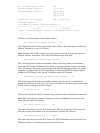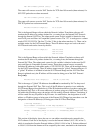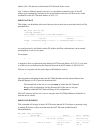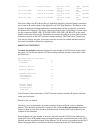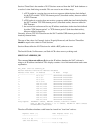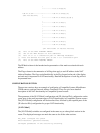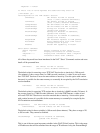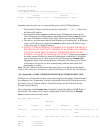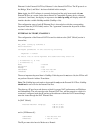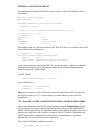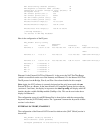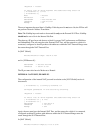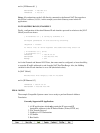
and in [ IP Ethernet 0.1 ]:
SubnetMask = 255.255.0.0
IPAddress = 10.5.0.1
Notes: All workstations on the LAN directly connected to the Internal NAT Port must have
this IP Port's address (10.5.0.1, in this example) set as their Gateway route in their IP
applications.
NAT PASSTHRU RANGE, EXAMPLE 3
Finally, configuration of the other Ethernet IP sub−interface port and its relation to the [NAT
Global] section are shown.
[ IP Ethernet 0.1 ] # config ip ethernet 0.2
Configure parameters in this section by entering:
<Keyword> = <Value>
To find a list of valid keywords and additional help enter "?"
[ IP Ethernet 0.2 ] #list
[ IP Ethernet 0.2 ]
IPAddress = 198.41.10.97
SubnetMask = 255.255.255.240
NatMap = Off
As for the External and Internal NAT Ports, the router must be configured, or have the ability,
to route the IP traffic addressed to and from the NAT PassThru Range. Also, the NatMap
variable for this IP sub−interface is set to Off (the default value).
In [NAT Global]
Entered Pass Thru range(s): 198.41.10.98/28
and in [IP Ethernet 0.2]
IPAddress = 198.41.10.97
SubnetMask = 255.255.255.240
FINAL NOTES
The example Compatible Systems router is now ready to perform Network Address
Translation.
Currently Supported IP Applications
All IP applications which only contain the IP source and IP
destination addresses in the IP Packet Header (Telnet, HTTP, etc.)
1.
File Transfer Protocol2.
NetBios for NT Workstations3.
CUSeeMe4.
Real Audio5.



